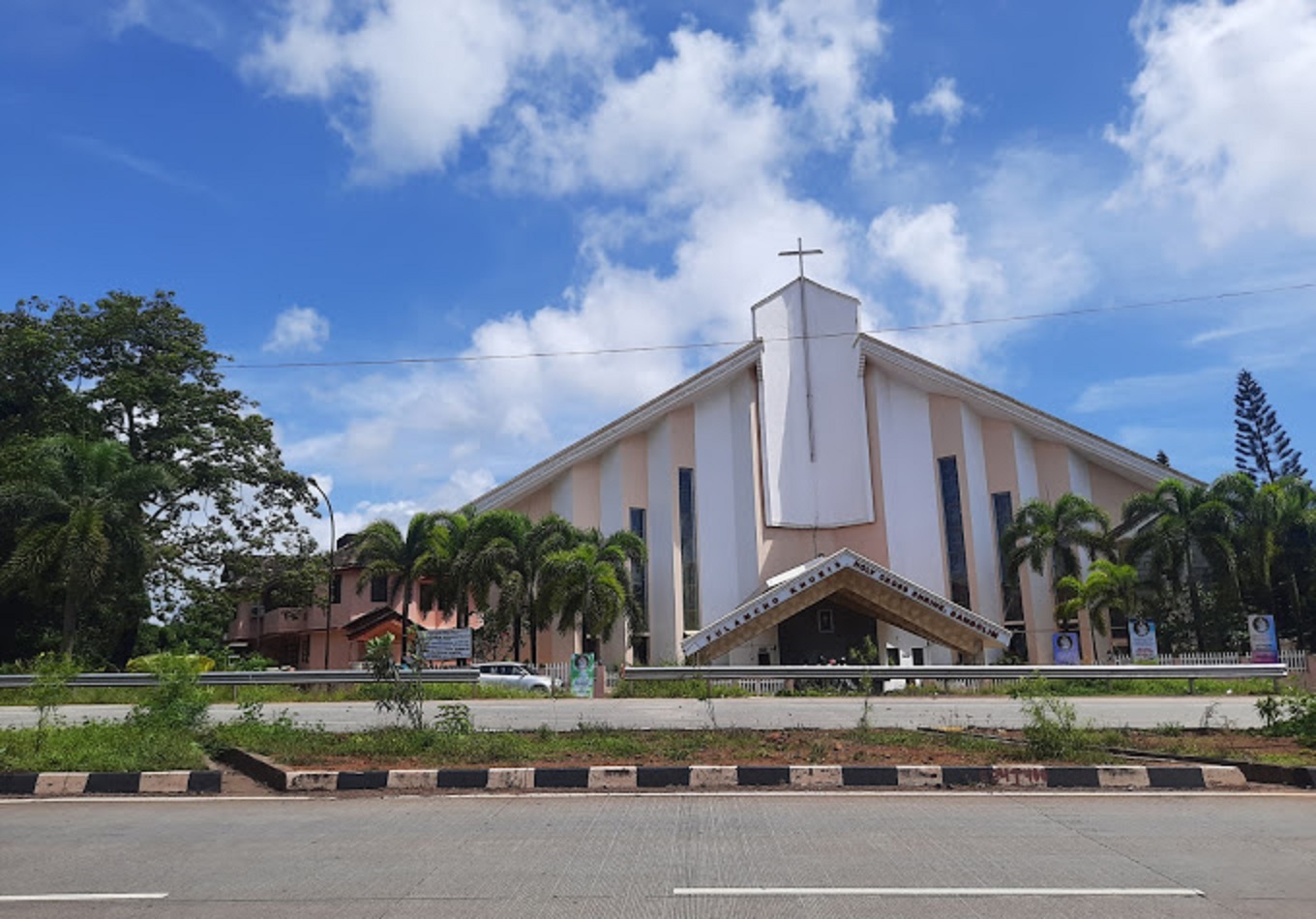
The Miraculous Cross or Fulancho Khuris at Bambolim.
Photo Credits: The Goan
PANAJI
The much revered and popular 'The Miraculous Cross' or 'Fulancho Khuris' at Bambolim has physically evolved from a roadside cross of stone painted white to now a celebrated holy place covered with a well-designed canopy attached to which is a modern-design shrine built three decades ago.
At the time the shrine was built in 1995-96, the government of the day faced a dilemma while granting permission for the shrine as the law required that it be built beyond 40 meters away from the centre of the road as it literally hugged the Panaji-Margao National Highway-17 (now NH-66).
The to-and-fro between the church authorities and the lay Catholic community, then led by the Parish Priest of Bambolim the late Fr Freddy da Costa, had led to some tense situations. However, the brinksmanship and negotiating skills displayed by the political leadership of the time and the Church leaders meant that it all had a sweet ending -- a middle path where a few meters of concession was granted by the authorities and the shrine was shifted a few meters behind the existing cross.
At least two folkloristic and oral history accounts attribute the reverence for the Cross at Bambolim to the case of a woman from Siridao named Santana Afonso who it is claimed was miraculously cured of advanced-stage cancer in the 1940s. The lady is said to have prayed at the Cross and promised to cover it with a canopy which she did.
However, why and how the Cross first came to be built at that location at a time when Bambolim had no residences anywhere on the entire plateau still remains a mystery. One legend originating from Siridao suggests that it was built by people at the spot where there existed a head-height stone meant for people to rest while carrying loads on their heads from village to village.
When a military camp was located nearby, many soldiers visited the canopied Cross for their faith needs. They lined the cross with tiles, some of which still adorn the Cross to this day.
Nonetheless, the Cross and shrine built in 1995-96 were a pleasant deviation from the fracases witnessed in conflicts between communities which rever such holy places and government authorities who, armed by the law, either demolish or relocate them to make way for road expansion or other public projects.